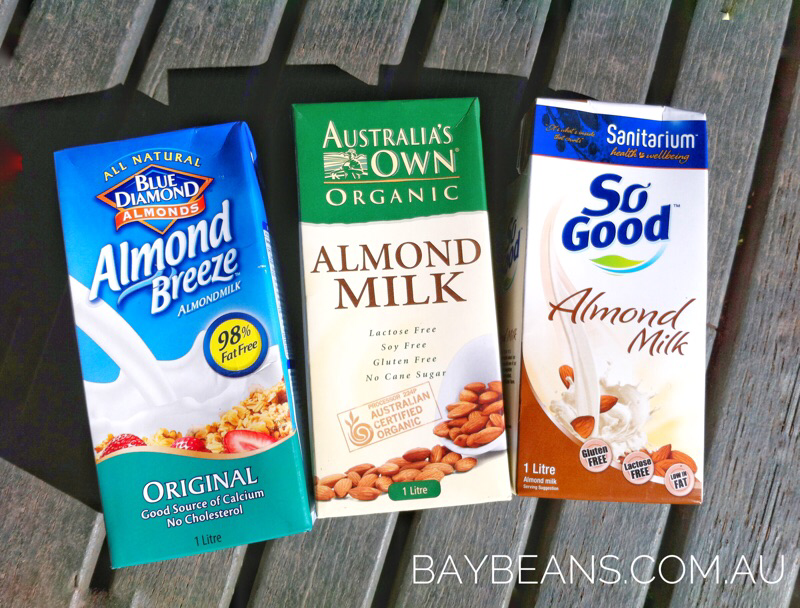Almond milk has increased in popularity in the last few years. In 2015, cafes in Australia would have been making white coffees in a ratio of something like;
70% full cream Cows milk
10% Light milk
10% Soy Milk
5% Skim milk
5% Almond milk.
In 2018, that has changed, with Almond Milk stealing share from both Soy milk and light milk as well as converting some cow milk drinkers;
65% full cream Cows milk
10% Light milk
5% Soy Milk
5% Skim milk
15% Almond milk.
So while it’s not dramatic by numbers when compared to the alternatives, Almond Milk usage has more than doubled.
The benefit of almond milk compared to soy milk when being used in coffee is that it can be heated slightly higher. Actually, it can be heated to the same 65c that is ideal for cows milk, whereas Soy Milk should not be heated beyond 55c.
Just like steaming cows milk for the office or at home, start with a cold jug and cold milk - it allows for the milk to be exposed to the steam wand for longer time, which means a creamier texture as the bubbles are split more.
In stretching your almond milk, allow a whirlpool effect to form and feel for the temperature with your hand on the outside of the jug, or use a thermometer if your not too confident. Where Soy milk can seperate in the later stages of milk steaming, almond milk doesn’t have that same problem.
You will however have a bit more trouble in creating latte art using Almond Milk, since there is a high percentage of water in Almond Milk, it won’t tie in with the coffee as effectively as cows milk. You should still be able to create a nice rosetta or tulip pattern though, with a little practice.
If you like to savour your coffee, as the temperature drops, or your coffee has been sitting for a while, the different PH levels of almond milk and the chemical reactions with the coffee, your almond milk will seperate from the coffee, which can look a little strange. Give it a stir and everything will be back to normal.
70% full cream Cows milk
10% Light milk
10% Soy Milk
5% Skim milk
5% Almond milk.
In 2018, that has changed, with Almond Milk stealing share from both Soy milk and light milk as well as converting some cow milk drinkers;
65% full cream Cows milk
10% Light milk
5% Soy Milk
5% Skim milk
15% Almond milk.
So while it’s not dramatic by numbers when compared to the alternatives, Almond Milk usage has more than doubled.
The benefit of almond milk compared to soy milk when being used in coffee is that it can be heated slightly higher. Actually, it can be heated to the same 65c that is ideal for cows milk, whereas Soy Milk should not be heated beyond 55c.
Just like steaming cows milk for the office or at home, start with a cold jug and cold milk - it allows for the milk to be exposed to the steam wand for longer time, which means a creamier texture as the bubbles are split more.
In stretching your almond milk, allow a whirlpool effect to form and feel for the temperature with your hand on the outside of the jug, or use a thermometer if your not too confident. Where Soy milk can seperate in the later stages of milk steaming, almond milk doesn’t have that same problem.
You will however have a bit more trouble in creating latte art using Almond Milk, since there is a high percentage of water in Almond Milk, it won’t tie in with the coffee as effectively as cows milk. You should still be able to create a nice rosetta or tulip pattern though, with a little practice.
If you like to savour your coffee, as the temperature drops, or your coffee has been sitting for a while, the different PH levels of almond milk and the chemical reactions with the coffee, your almond milk will seperate from the coffee, which can look a little strange. Give it a stir and everything will be back to normal.

 RSS Feed
RSS Feed
